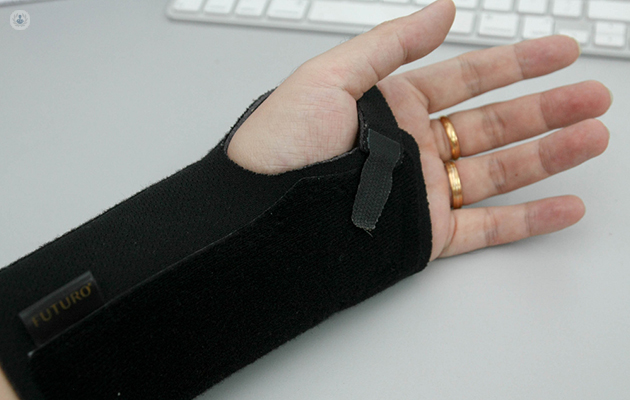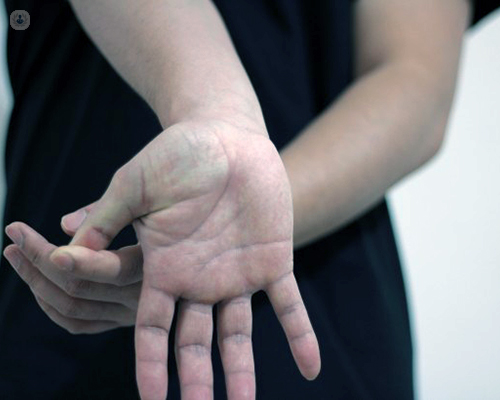Treating your hand nerve irritation
Escrito por:Carpal tunnel syndrome affects the median nerve in the wrist and hand, causing stiffness, reduced hand movement and discomfort. It is fairly common in adults and can be treated, either at home, or medically, depending on the severity. However, in some circumstances, diagnosis will show that what is suspected to be carpal tunnel syndrome, turns out to be another condition. Miss Tanaya Sarkhel, an experienced orthopaedic surgeon of the Surrey Orthopaedic Clinic, discusses treatment options for carpal tunnel and the other causes of hand nerve irritation that are often investigated.

What can I do to treat carpal tunnel syndrome?
Wearing splints helps to keep the volume of the space constant. If you are frequently troubled by pins and needles at night, wearing splints can improve the situation in around 72% of people. They should cross the wrist, but do not need to enclose the thumb and should be sufficiently light and low profile so that the wearing of them doesn’t upset your sleep.
Splints won’t work when they’re not on though, and a useful way of terminating pins and needles during the day is to stretch the nerve out – I certainly find it helpful to give the nerves a good old stretch at the end of the working day. It may set off pins and needles briefly, but they should settle very quickly.

If despite these measures, symptoms intrude into daily life and have gone on for more than six months, then it probably needs checking out. Healthcare professionals have a couple of specific clinical examination tests that help with diagnosis and may organise nerve conduction studies for you, which are non-invasive and give supportive data towards not only the diagnosis, but also the potential severity of the compression. This helps guide us on the urgency of further intervention and the likelihood of recovery. Ultrasound of the carpal tunnel can also aid decision-making, especially if all the previous tests seem ‘normal’ but symptoms sound absolutely classical: the median nerve can be visualised and its cross section measured to see if it is compressed.
Read more: Carpal tunnel syndrome
What else might it be?
The same nerve that is irritated in the wrist can also be irritated at other points on its journey to the fingertips. As the nerve roots exit the neck, they can be pinched by bulging cervical discs or arthritis in the small joints between the vertebrae. As the nerve passes the front of the shoulder, if there is swelling or instability associated with that joint, there may be additional pins and needles in the hand. Clumsiness and reduced grip may be more related to wear and tear (degenerative change) at the base of the thumb or inflammation around the thumb tendons (De Quervain’s tenosynovitis).
Persistent pins and needles, not particularly worse at night or with repetitive actions, may be because of a peripheral neuropathy. This is where for some other, usually metabolic reason, the fine nerve endings are not working properly. The commonest reason for this would be related to diabetes and is known as diabetic neuropathy, where sensation in the feet might also be affected. Improving diabetic control is important in reducing the chances of this occurring.
Something I particularly look out for, and another cause of peripheral neuropathy, is vitamin B12 deficiency. Vitamin B12 is important for nerve health and is found in red meat and offal. We don’t absorb it particularly well from the gut in tablet form and, in some conditions, such as pernicious anaemia, it is not really absorbed well at all. Vitamin B12 deficiency occurs in around 6% of people under 60 years of age and 20% of people over 60. Where identified, it can be replenished via a series of injections
What happens next?
Your healthcare professional will talk you through the findings of the tests and examinations, and the treatment plan you embark on together will take all of these features into account to find the most successful resolution of your symptoms. Measures may include injections or releasing surgery (usually under a local anaesthetic) to improve the structural pressures on the median nerve.


